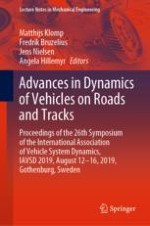2020 | OriginalPaper | Chapter
A Novel Vehicle Localization System Using Vision Module for Heading Feedback
Authors : Yishi Lu, Lu Xiong, Yanqun Han, Letian Gao
Published in: Advances in Dynamics of Vehicles on Roads and Tracks
Publisher: Springer International Publishing
Activate our intelligent search to find suitable subject content or patents.
Select sections of text to find matching patents with Artificial Intelligence. powered by
Select sections of text to find additional relevant content using AI-assisted search. powered by
